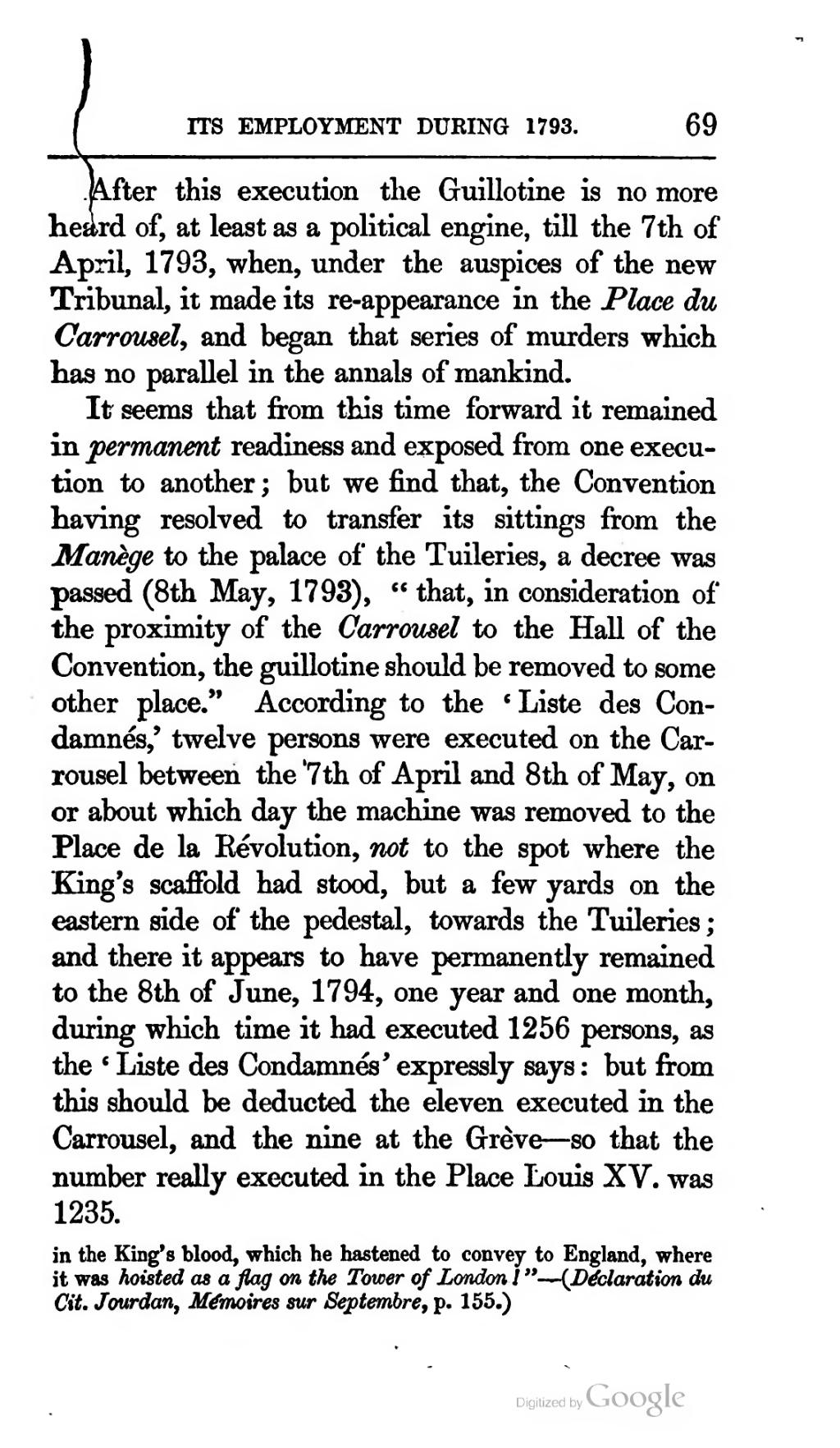After this execution the Guillotine is no more heard of, at least as a political engine, till the 7th of April, 1793, when, under the auspices of the new Tribunal, it made its re-appearance in the Place du Carrousel, and began that series of murders which has no parallel in the annals of mankind.
It seems that from this time forward it remained in permanent readiness and exposed from one execution to another; but we find that, the Convention having resolved to transfer its sittings from the Manège to the palace of the Tuileries, a decree was passed (8th May, 1793), that, in consideration of the proximity of the Carrousel to the Hall of the Convention, the guillotine should be removed to some other place." According to the 'Liste des Gendarmnés,' twelve persons were executed on the Carrousel between the 7th of April and 8th of May, on or about which day the machine was removed to the Place de la Révolution, not to the spot where the King's scaffold had stood, but a few yards on the eastern side of the pedestal, towards the Tuileries; and there it appears to have permanently remained to the 8th of June, 1794, one year and one month, during which time it had executed 1256 persons, as the 'Liste des Condamnés' expressly says: but from this should be deducted the eleven executed in the Carrousel, and the nine at the Greve—so that the number really executed in the Place Louis XV. was 1235.
in the King's blood, which he hastened to convey to England, where it was hoisted as a flag on the Tower of London!"—(Déclaration du Cit. Jourdan, Mémoires sur Septembre, p. 155.)

